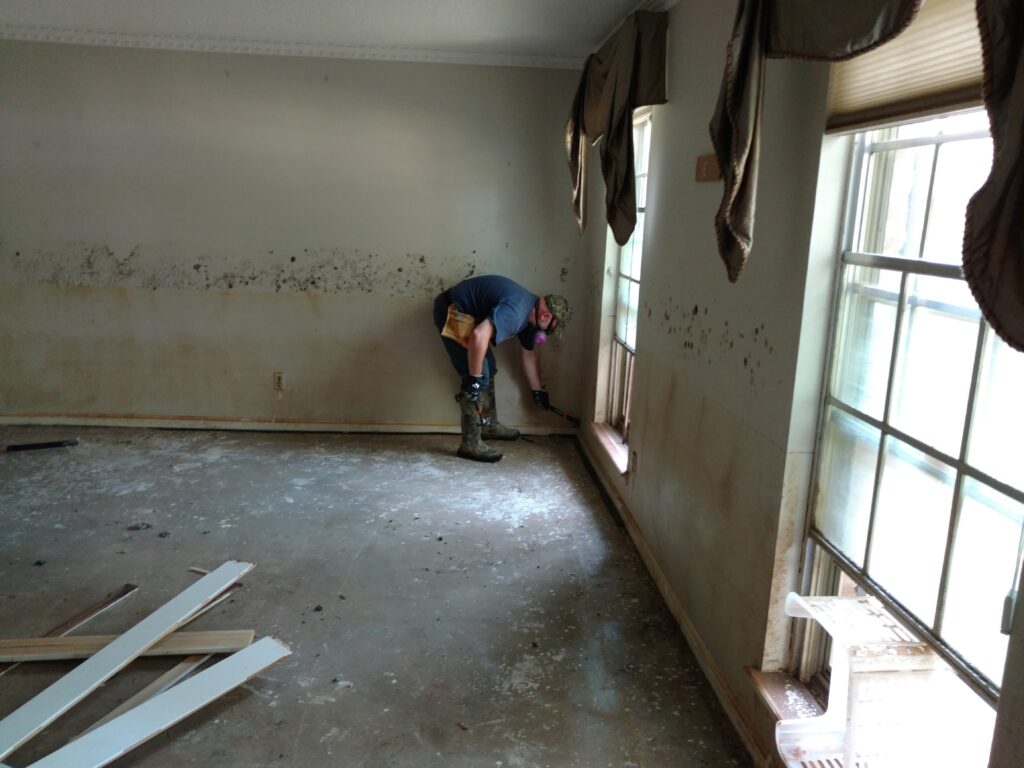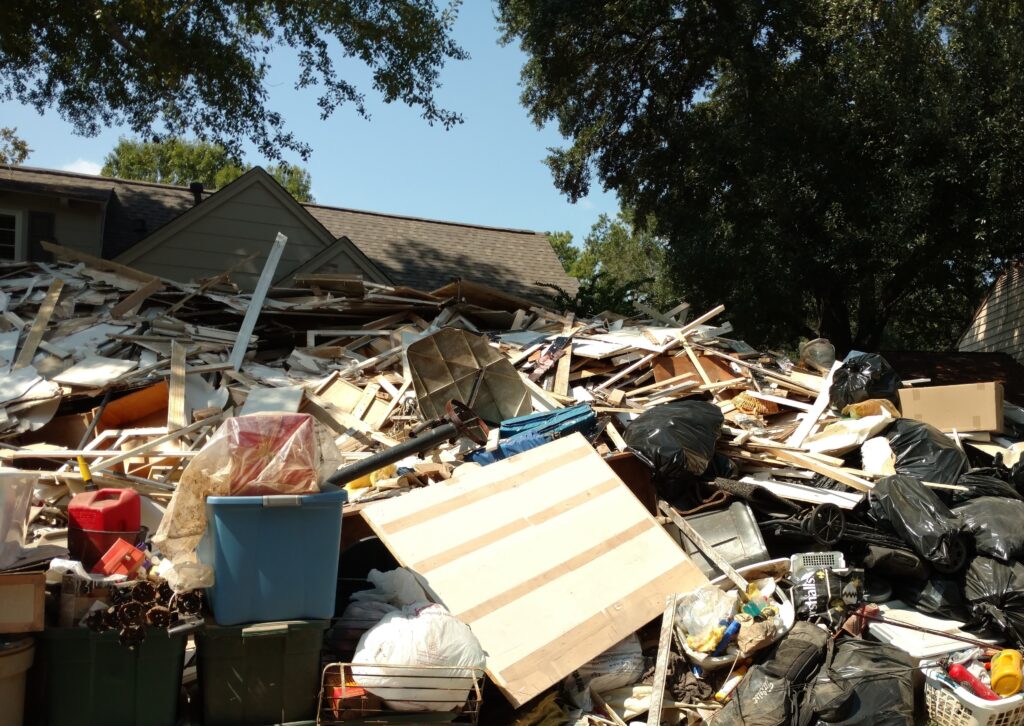This post is written by Larry McHaney, The C&MA Southwestern District Houston Relief Coordinator.
Flood waters are filled with nasty chemicals, debris, raw sewage, toxins and, in Texas, floating mounds of fire ants.
What’s Been Happening
As soon as the water recedes, crews must act as fast as possible to remove furniture and belongings—most of which is ruined. All damaged furnishings and appliances are carried to the front yard, waiting for a front-end loader to fill dump trucks headed for the local landfill.
Within hours, toxic black mold begins to grow on damp surfaces. So as soon as furniture has been cleared, crews work to remove all carpet and padding. Others begin to cut out drywall materials.
Drywall is usually removed in a straight horizontal line. They measure at least a foot above the damp area to make sure they only leave dry material. The insulation is then removed at the same level. Bare studs are exposed throughout the bottom floor of the house. Kitchen cabinets, wood floors, and sometimes even ceramic tile must be removed.

When the crew gets down to bare floors and exposed studs, then everything needs to be scrubbed cleaned and rinsed. When this is complete, fans and dehumidifiers are brought in for several days to thoroughly dry the studs and floors. At this point, phase one is complete.
In the Houston area, there are still many homes where cleanup has not begun for one reason or another. It could be that the home was empty or the owner has not returned from the evacuation. It might be that the person is elderly and has no help. Whatever the case, homes that have not begun the cleanup process by this point, will likely have to be demolished.
Where We’re Headed
The cleanup phase is beginning to wind down in Houston, and Alliance volunteers and local churches have already helped dozens of flood victims in this difficult process. Now the work of restoration begins. There is still a long road to recovery, and we need your continued prayers and support for the long haul.
If you would like to help, there are specific ways you can be of greatest assistance to the people here. If you would like to bring a team of workers, we need at least one or two people on your team that have skills and experience hanging drywall (measuring, cutting, installing, taping, floating, sanding, texturing, and painting).

We need some people with experience with HVAC, plumbing, electrical, and flooring. Not everyone on the team needs experience, but we do need at least one person who can train others and oversee the quality of the work.
We also need financial help to purchase supplies and even hire contractors to perform quality installations. Stores in the area are now pretty much fully stocked so supplies are available locally. Purchasing things here will save the delivery fees and hassle while helping the local economy.
Hurricane Harvey recovery is both a sprint and a marathon. There is a sprint to get homes and businesses dry and sanitized before the mold gets out of control. But there is a marathon to make homes not only livable again, but back to some measure of normalcy. This can take months. All the while, work and school continues to go on for families.
We would like to be able to work on 150 homes over the next few months. In both the sprint and the marathon, you can make such a difference. Want to join in? Learn more.